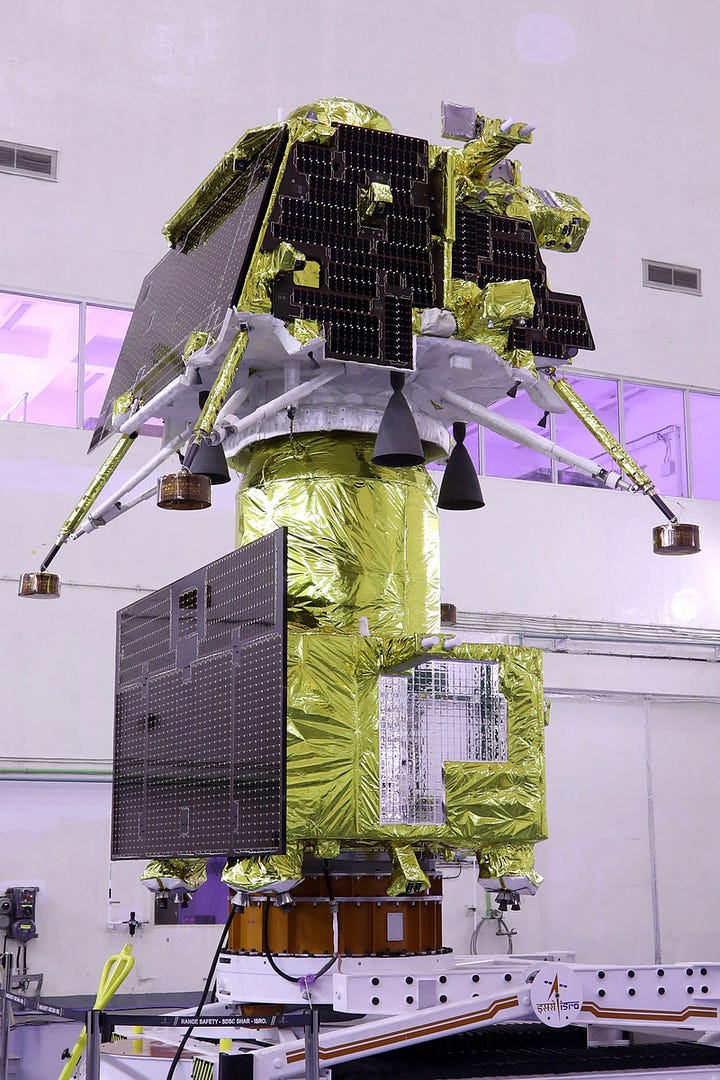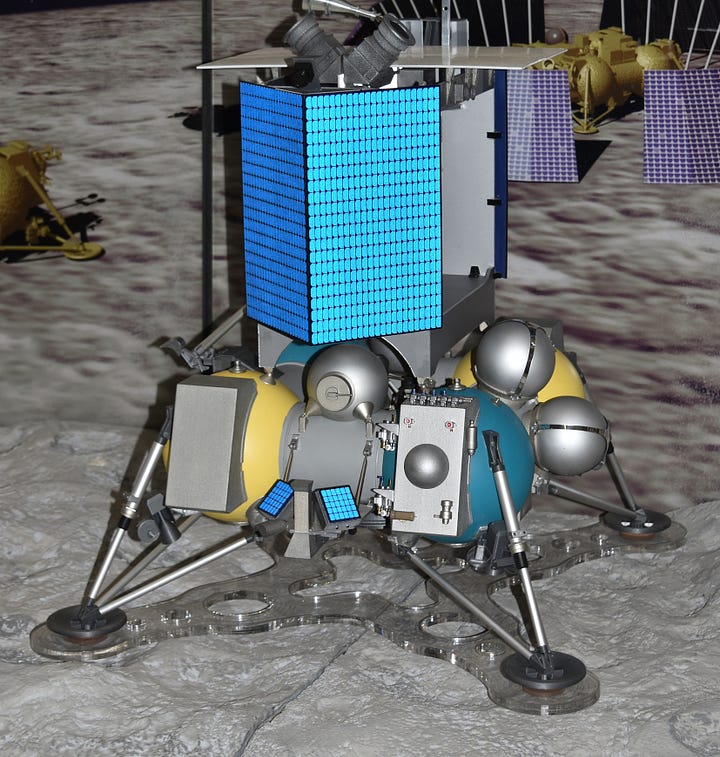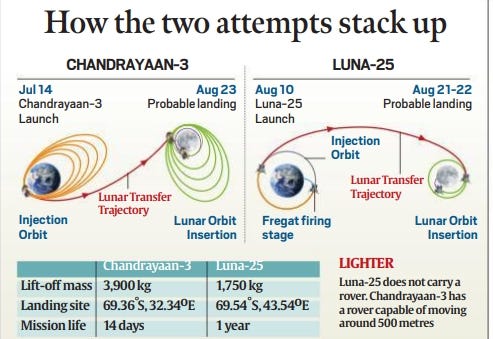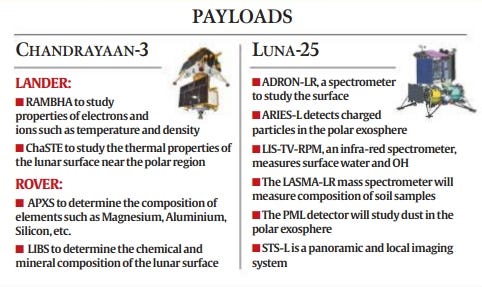Lunar Exploration Showdown: Luna-25 vs. Chandrayaan-3
Having a comparative analysis
Note: As of time of posting, we learnt that Luna-25 crashed on the Moon's surface during de-orbiting after technical glitches on 19 August 2023 at 11:57 UTC. That’s a sad news for the space enthusiasts!
The realm of lunar exploration is currently witnessing an enthralling rivalry as two formidable contenders, Russia's Luna-25 and India's Chandrayaan-3, gear up for their lunar landings. Scheduled to touch down in close succession, these missions promise to redefine lunar exploration. Let's delve into the intriguing race and compare the two missions.


Landing Countdown: The Dramatic Duel
Russia's Luna-25 set off aboard its Soyuz rocket on August 10, 2023, marking its triumphant return to lunar exploration after 47 years. Meanwhile, India's Chandrayaan-3 embarked on its lunar voyage on July 14 and successfully entered lunar orbit on August 5. Both missions are sprinting towards their respective lunar destinations, but the closeness of their landing dates has escalated global attention.
Chandrayaan-3's landing window spans August 23-24, shortly following Luna-25's anticipated touchdown between August 21-23. While the order of arrival might not drastically alter the lunar landscape, the proximity of their landings has ignited a buzz of anticipation and curiosity.
Swift Trajectory vs. Elaborate Route
A central point of distinction between the two missions lies in their trajectories. Luna-25, despite launching almost a month later, is poised to reach the Moon ahead of Chandrayaan-3. This is attributed to Luna-25's more direct trajectory, bestowing it with a speedy journey advantage. The factors contributing to Luna-25's swifter trajectory include its lighter lift-off mass of 1,750 kg compared to Chandrayaan-3's 3,900 kg. This lightweight design enables Luna-25 to traverse a shorter path to its lunar destination.
Chandrayaan-3, on the other hand, embarked on a circuitous route to compensate for its fuel efficiency constraints. The mission required multiple maneuvers to gain velocity, elongating its journey to the lunar orbit by approximately 22 days.
The Factors at Play: Mass, Efficiency, and Sun's Path
The differing arrival times of Luna-25 and Chandrayaan-3 can be attributed to the missions' distinct mass and fuel efficiency considerations. Luna-25's lightweight design and fuel-efficient storage allowed for a more direct lunar approach. In contrast, Chandrayaan-3's limited fuel-carrying capacity necessitated a more intricate path to reach the Moon.
Additionally, the timing of the spacecraft landings is influenced by the path of the Sun across the lunar landing sites. The Sun's position plays a crucial role in ensuring optimal illumination for safe landings.
Distinct Objectives and Payloads
Both Luna-25 and Chandrayaan-3 harbor unique objectives and payloads that define their missions:
Luna-25:
Luna-25 signifies Russia's reentry into lunar exploration after a prolonged hiatus.
Weighing lighter than Chandrayaan-3, Luna-25 is designed to study soil composition, dust particles, and surface water detection.
Its primary focus is on unearthing insights into lunar soil and water distribution.
Chandrayaan-3:
Chandrayaan-3 marks India's third lunar mission, striving for a successful soft landing on the Moon's surface.
The mission encompasses a rover with the capability to move 500 meters.
Chandrayaan-3's advanced instruments aim to scrutinize lunar soil and detect water-ice in shadowed craters near the lunar South Pole.
The landing site was strategically chosen due to the presence of craters in permanent shadow, enhancing the likelihood of discovering water-ice.
Culmination of Unprecedented Exploration
As the countdown continues, the race to the lunar South Pole intensifies, with Luna-25 and Chandrayaan-3 on the brink of historic achievements. Beyond the competition, these missions symbolize the prowess of humanity's unending quest for cosmic enlightenment. While the sequence of arrivals might not profoundly impact the outcome, the cumulative knowledge gained from each mission collectively enriches our understanding of the Moon's enigmatic past and potential.
In a dynamic era of global space exploration, both Russia and India stand on the precipice of milestones that shape the trajectory of lunar investigation. Through their endeavors, these missions promise groundbreaking insights into the Moon's composition, history, and resource potential.
As the world awaits their triumphant touchdowns, the lunar landscape beckons with promises of profound revelations. Regardless of the order of arrival, Luna-25 and Chandrayaan-3 harmoniously contribute to the ongoing odyssey of exploration, unraveling the mysteries of Earth's celestial companion and expanding the horizons of human knowledge.
Hope you liked the article. Let us know, what do you think about these space probes, which other celestial body should be more explored?





Zooming out a bit, has Russia had a single successful space exploration probe since the Soviet days? I certainly cannot think of any. Each has failed for one reason or another.
A tragedy really, but exemplifies the point made by @Peter Hague that the Russian space program really died with the fall of the USSR.